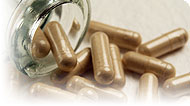Chemicals and Cancer: What You Can Do

Don’t forget about the most important things you can do to lower cancer risk
In
a comprehensive, 240-page report, the President’s Cancer Panel has
called attention to issues around environmental chemicals and cancer
risk. Some groups have pointed out that many known lifestyle changes
have been shown to help offset cancer risks, making the emphasis on
external factors unnecessary. But others argue that environmental risks
are not well understood by the public and deserve both consideration and
further study. Supported with solid science noted in over 450
references, some scientists feel the report is an important step in
understanding environmental causes of cancer, which may help people to
better avoid them.
Food for thought
With many studies conflicting or difficult to perform on humans with meaningful results, advocacy groups on both sides are hashing out how harmful certain substances might be. While not definitive on those points, the new report does raise several findings worth noting:- Only a few hundred of the more than 80,000 chemicals in use in the US have been tested for safety, and many known and suspected carcinogens remain unregulated.
- Chemicals typically are studied for safety one at a time, overlooking damage to health from exposure to multiple chemicals at once.
- Existing regulatory frameworks assume that chemicals are safe unless strong evidence emerges to show that they are not. The Panel advises caution in such situations, rather than approving chemicals of unknown effect.
- Exposure during pregnancy and childhood is particularly damaging to health. Over 300 chemicals can be found in the umbilical cord blood of newborn babies, pointing to the need to reduce exposures in these populations.
Enjoy clean living for extra protection
So, what’s a health-conscious person to do? While it’s safe to say that we all interact with chemicals that may increase cancer risk, you can lower your personal risk by taking care to control your exposure, especially at home. Though the final word is not in on all of the steps described below, the report makes some recommendations that make sense in the meantime:Healthy food habits:
- Choose foods, house and garden products, play spaces, toys, medicines, and medical tests that minimize children’s exposure to potentially toxic substances.
- Choose filtered tap water over bottled water for drinking. Store drinking water in stainless steel or bisphenol-A (BPA)-free containers.
- Choose foods grown without artificial fertilizers, pesticides, and growth hormones whenever possible.
- Microwave foods only in ceramic or glass, not plastic.
- Women who are pregnant or planning a pregnancy should avoid exposure to endocrine-disrupting chemicals (such as certain pesticides and some plastic food and beverage containers) and known or suspected carcinogens.
- Properly dispose of medications, household chemicals, paints, and other materials according to the recommendations of your local waste management service.
- Avoid exposure to secondhand tobacco smoke in the home, auto, and public places.
- Consult information sources such as the Household Products Database to make informed decisions about products you buy and use.
- Use recommended protective wear when using household and garden chemicals.
- If work or house projects expose you to chemicals, remove shoes before entering the home and launder work clothes separately to minimize total household exposure.
- Check radon levels in your home and address as necessary.
- Work with your health care provider to keep accurate records of medical tests that may expose you to harmful substances such as radiation or chemicals. This will allow you to make informed decisions about whether the benefits of a particular medical test are worth the risk of exposure to environmental carcinogens.
- Try to wear a headset when using a cell phone, text instead of calling, and keep calls brief.
- Avoid excessive ultraviolet light exposure by using sunscreen and proper sun-protective clothing. Never use tanning beds.
(President’s Cancer Panel 2008-2009 Annual Report. Reducing Environmental Cancer Risk. What We Can Do Now. Available at pcp.cancer.gov. Accessed May 24, 2010.)
Suzanne Dixon, MPH, MS, RD,
an author, speaker, and internationally recognized expert in chronic
disease prevention, epidemiology, and nutrition, has taught medical,
nursing, public health, and alternative medicine coursework. She has
delivered over 150 invited lectures to health professionals and
consumers and is the creator of a nutrition website acclaimed by the New York Times and Time magazine.
Suzanne received her training in epidemiology and nutrition at the
University of Michigan, School of Public Health at Ann Arbor.
















